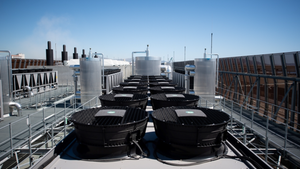green lightbulb with a crank attached to it and gears inside the bulb.jpg?width=700&auto=webp&quality=80&disable=upscale)
IT Sustainability.jpg?width=700&auto=webp&quality=80&disable=upscale)
Energy Efficiency Not Enough in Push for Data Center SustainabilityEnergy Efficiency Not Enough in Push for Data Center Sustainability
Energy efficiency is only part of the solution when it comes to data center sustainability, with right-sizing datasets and equipment also playing a role, according to HPE.
Sign up for the ITPro Today newsletter
Stay on top of the IT universe with commentary, news analysis, how-to's, and tips delivered to your inbox daily.






.jpg?width=700&auto=webp&quality=80&disable=upscale)


.jpg?width=300&auto=webp&quality=80&disable=upscale)




































.jpg?width=700&auto=webp&quality=80&disable=upscale)


_(1).png?width=700&auto=webp&quality=80&disable=upscale)

.png?width=700&auto=webp&quality=80&disable=upscale)